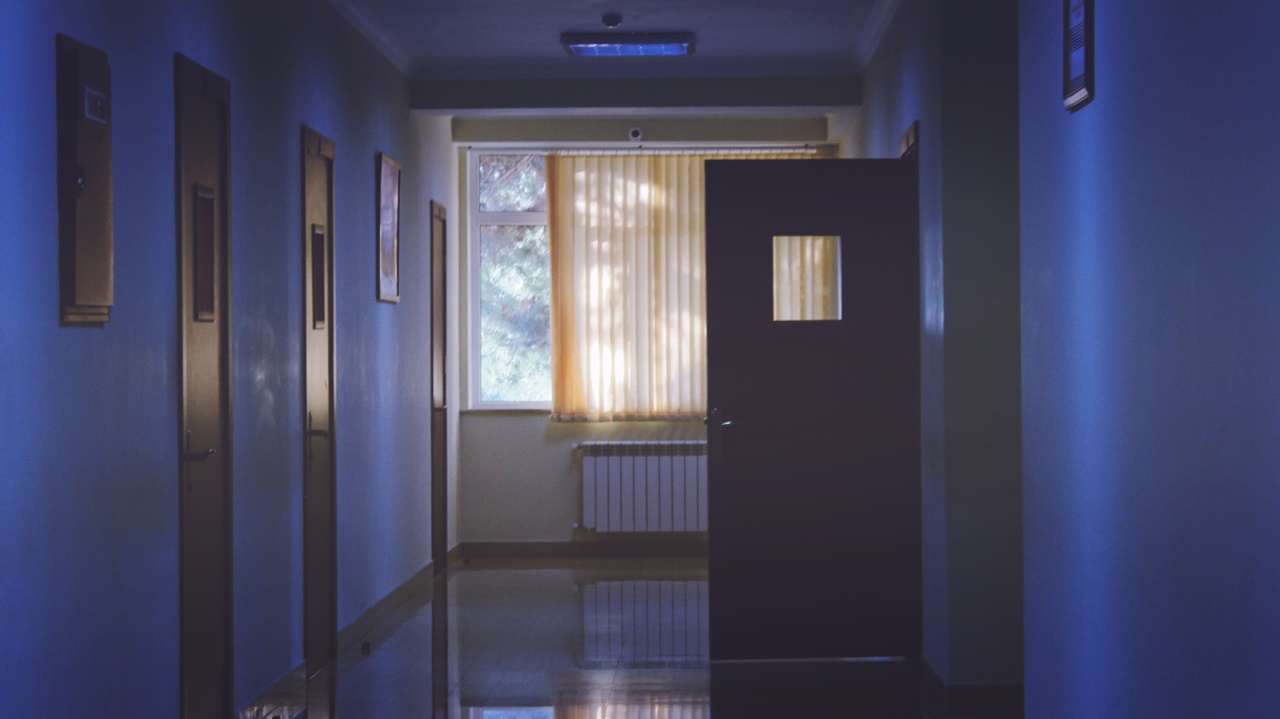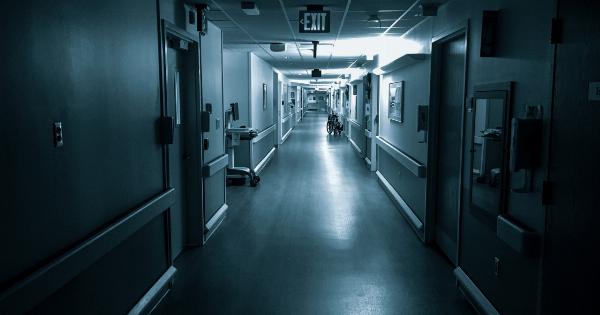Inadequate lighting in hospital rooms is a major problem as it affects not just the patients but also the hospital staff.
The lighting in hospital rooms can directly influence the recovery time of patients and affect the emotional well-being of both patients and hospital personnel. Low lighting in a hospital room can contribute to various factors, which can impact patient outcomes. This article will explore the various factors that contribute to low lighting in hospital rooms.
1. Limited Natural Light
The main cause of low lighting in hospital rooms is the limited natural light. Hospital rooms are designed to ensure that minimal light enters the room, which can affect the circadian rhythm of the patients and affect their sleep pattern.
This can also be due to the positioning of the hospital, where the patient’s room may not receive adequate sunlight due to obstacles such as adjacent buildings, trees and other factors that block natural light.
2. Fluorescent Lighting
Another factor contributing to low lighting in hospital rooms is the type of lighting used. Fluorescent lighting is commonly used in hospitals because of its energy efficiency and cost-effectiveness.
However, fluorescent lights can contribute to the discomfort and recovery time of patients, especially those with migraines, eye problems, and other conditions that are sensitive to light. Additionally, fluorescent lights emit blue light, which also affects the circadian rhythm of patients.
3. Poor Maintenance
Poor maintenance of lighting fixtures is another contributing factor to low lighting in hospital rooms. Over time, lighting fixtures can accumulate dust, dirt, and other materials that can block light and reduce the amount of light emitted.
Poor maintenance can also lead to lights flickering, which can be distracting and cause discomfort to patients. Therefore, it is essential to ensure that lighting fixtures are cleaned and maintained regularly to ensure that they function optimally and provide adequate lighting to patients.
4. Aging Infrastructure
Aging infrastructure is another cause of low lighting in hospital rooms. Many hospitals are housed in buildings that have been around for decades, and the electrical systems may not be modernized.
Buildings with outdated electrical systems cannot support modern lighting fixtures that require higher wattage, leading to low lighting conditions. Additionally, older buildings may have outdated wiring, which can lead to power outages or fire hazards. Hospitals need to invest in upgrading their electrical systems regularly to ensure that they provide adequate lighting to patients.
5. Insufficient Lighting Planning
Insufficient lighting planning can also contribute to low lighting conditions in hospital rooms. Many hospitals are designed to maximize energy efficiency and reduce power consumption, which means that lighting planning may not be optimal.
Poor planning can lead to inadequate lighting in specific areas of the room, such as the head of the bed, where patients require adequate lighting to read or perform other tasks. Hospitals need to ensure that proper lighting planning is done to ensure that patients have adequate lighting in every aspect of their room.
6. Noise Concerns
Noise concerns can contribute to low lighting conditions in hospital rooms because many hospitals use lighting controls to reduce the level of noise in the rooms.
This is because some lighting fixtures can produce a humming sound that may be distracting to patients. Therefore, hospitals may use controls that reduce the wattage of the bulbs, which can lead to low lighting conditions.
However, hospitals can resolve this issue by using lighting fixtures specifically designed to reduce noise levels while still providing adequate lighting for patients.
7. Budget Constraints
Budget constraints can also contribute to low lighting conditions in hospital rooms. Hospitals operate on tight budgets, which means that some lighting fixtures may not be replaced or upgraded due to lack of funds.
Additionally, hospitals may not purchase high-quality lighting fixtures due to their high cost, which can lead to inadequate lighting conditions. Therefore, hospitals need to allocate sufficient funds to lighting and prioritize their spending to ensure that patients have adequate lighting.
8. Inadequate Staff Training
Another factor contributing to low lighting in hospital rooms is inadequate staff training.
Hospital staff sometimes do not realize the importance of adequate lighting in patient recovery, and therefore, do not prioritize lighting when conducting routine checks. Additionally, staff members may not know how to adjust lighting fixtures correctly to ensure that patients have adequate lighting.
Hospitals need to train their staff on the importance of lighting and how to ensure patients receive adequate lighting in their rooms.
9. Patients’ Preferences
Patients’ preferences can also contribute to low lighting conditions in hospital rooms. Some patients may prefer to have low lighting conditions to reduce eye strain and promote sleep.
Patients with eye problems may find bright lights uncomfortable, and therefore, request low lighting conditions. However, hospitals need to ensure that they strike a balance between patient preferences and patient recovery, ensuring that patients receive adequate lighting to promote their recovery while respecting their preferences.
10. Environmental Factors
Lastly, environmental factors such as weather conditions and time of day can also contribute to low lighting in hospital rooms. During cloudy weather, natural light may not penetrate into the hospital rooms, leading to low lighting conditions.
Additionally, during the evening and night time, when the sun sets, light may decrease, leading to low lighting conditions. Hospitals need to anticipate these environmental factors and ensure that adequate lighting is available to compensate for low lighting conditions.
Conclusion
Low lighting conditions in hospital rooms can have a significant impact on patients’ recovery and emotional well-being.
Factors such as limited natural light, fluorescent lighting, poor maintenance, aging infrastructure, insufficient lighting planning, noise concerns, budget constraints, inadequate staff training, patients’ preferences, and environmental factors contribute to low lighting conditions in hospital rooms. Hospitals need to address these factors and ensure that patients receive adequate lighting to promote their recovery and improve their emotional well-being.





























